GIGABYTE Direct Liquid Cooling Solution
GIGABYTE Direct Liquid Cooling Solution
GIGABYTE offers both independently developed and third-party Direct Liquid Cooling (DLC) solutions designed for high-density computing in data centers. The advanced cooling system operates by allowing direct contact between heat-generating components, such as CPUs and GPUs, and a cold plate connected to tubes with coolant inside, effectively removing heat from the server through a more efficient and rapid method. Compared to traditional air-cooled systems, DLC transfers heat at a much higher rate, ensuring overall system performance and stability.
GIGABYTE DLC solutions can be easily integrated with both liquid-to-air and liquid-to-liquid coolant distribution units (CDUs), requiring minimal modifications to existing cooling hardware in data centers. Another option for easier adoption of new cooling solutions is deploying Rear Door Heat Exchangers (RDHxs). Compatible with both DLC servers and air-cooled servers, this design offers an ideal solution for gradually transitioning from air-cooling infrastructure to DLC data centers. These designs effectively help customers meet the increasing demands for greater heat dissipation at a reasonable cost and with ease of deployment.
To simplify the validation process, GIGABYTE also provides pre-tested, rack-scale DLC solutions with included software, which are easy to deploy and performance-optimized while still offering customizable options. With GIGABYTE servers and components from our trusted partners, we are committed to providing simple solutions for anyone looking for quick adoption of the latest cooling alternatives.
And to learn more about our AI POD solutions: GIGAPOD
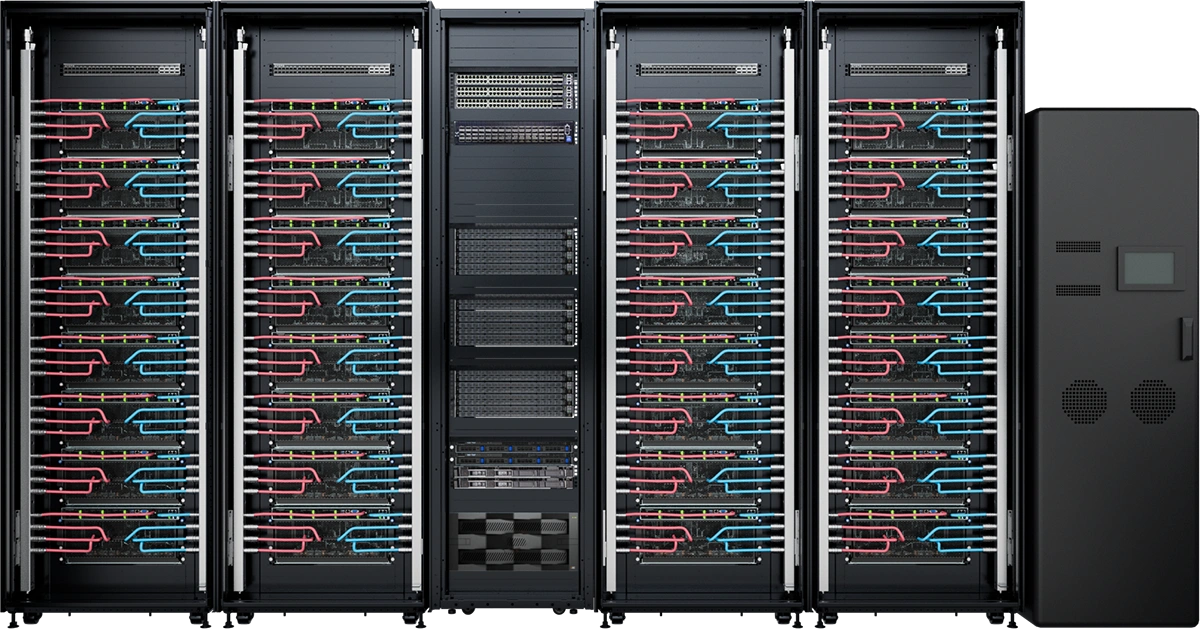
Cooling Challenges for AI, HPC, and Cloud Computing
Why GIGABYTE DLC Solution
-
All-in-one & fully optimized
Providing an all-in-one rack solution tailored for customers seeking a complete, high-performance setup.
-
Flexible & reliable
Tested with various brands to allow customers to customize configurations using products from verified partners.
-
Faster delivery at a lower cost
Ensuring shorter lead times and competitive pricing while maintaining the high-quality performance and services offered by GIGABYTE and its partners.
Explore Flexible DLC Solutions with GIGABYTE
DLC Solution Composition

DLC Solution Composition
| Project name | DLC servers | Support GPU | Manifold | CDU | PDU | Rack | Coolant | |
|---|---|---|---|---|---|---|---|---|
| DL83-GP0 | 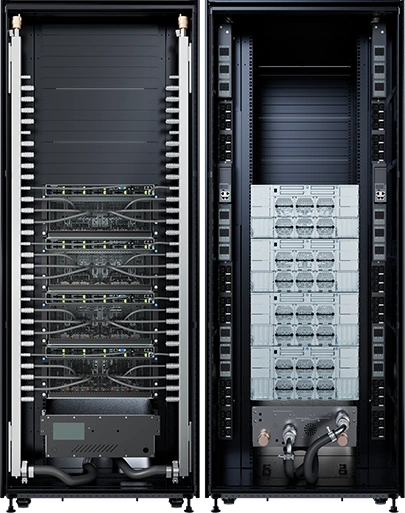 |
4 x G593-SD0-LAX1 | NVIDIA HGX™ H100 | Motivair(25ST7-4000ZF-M4R) | Motivair(25ST7-4000Z2-M4R)CGB20 | nVent(25CRH-03K001-C0R)QPA2 | nVent(25EC5-DL8304-H0R)front manifold | PG25 |
| 4 x G593-SD1-LAX3 | NVIDIA HGX™ H200 | |||||||
| 4 x G593-ZD1-LAX1 | NVIDIA HGX™ H100 | |||||||
| 4 x G593-ZD2-LAX1 | NVIDIA HGX™ H100 | |||||||
| 4 x G593-ZD1-LAX3 | NVIDIA HGX™ H200 | |||||||
| 4 x G593-SX1-LAX1 | AMD Instinct™ MI300X | |||||||
| 4 x G593-ZX1-LAX1 | AMD Instinct™ MI300X | |||||||
| DL83-GP1 |  |
8 x G4L3-SD1-LAX3 | NVIDIA HGX™ H200 | Motivair(25ST7-4001Z2-M4R) | Motivair(25ST7-4000Z2-M4R)CGB20 | nVent(25CRH-03K001-C0R)QPA4 | nVent(25EC5-DL8304-H0R)front manifold | PG25 |
| 8 x G4L3-ZD1-LAX3 | NVIDIA HGX™ H200 | |||||||
| DL83-GP2 |  |
8 x G4L3-SD1-LAX5 | NVIDIA HGX™ B200 | Motivair(25ST7-4001Z1-M4R) | Motivair(25ST7-4000ZV-M4R)FD83 | Anderson125A Smart PDUQPA4 | nVent(25EC5-DL8304-H0R)front manifold | PG25 |
| 8 x G4L3-ZD1-LAX5 | NVIDIA HGX™ B200 | |||||||
| DL83-GP3 | 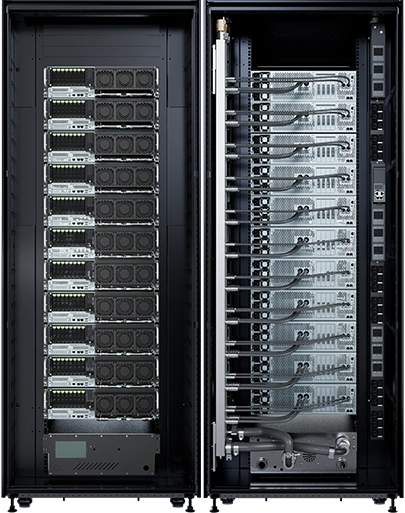 |
11 x G363-SR0-LAX1without redundant | NVIDIA HGX™ H100 | Motivair(25ST7-4000ZY-M4R) | Motivair(25ST7-4000Z2-M4R)CGB20 | nVent(25CRH-03K001-C0R)QPA2without redundant | nVent(25EC5-DS8300-H0S)rear manifold | PG25 |
| 11 x G363-SR0-LAX4without redundant | NVIDIA HGX™ H200 | |||||||
| 11 x G363-ZR0-LAX1without redundant | NVIDIA HGX™ H100 | |||||||
| 11 x G363-ZR0-LAX4without redundant | NVIDIA HGX™ H200 | |||||||
| DL83-GP4 |  |
8 x G383-R80-LAP1without redundant | AMD Instinct™ MI300A | Motivair(25ST7-4000ZZ-M4R) | Motivair(25ST7-4000Z2-M4R)CGB20 | nVent(25CRH-03K001-C0R)QPA2without redundant | nVent(25EC5-DS8300-H0S)rear manifold | PG25 |
| Project name | DLC servers | Support CPU | Manifold | CDU | PDU | Rack | Coolant | |
|---|---|---|---|---|---|---|---|---|
| DL83-HD0 | 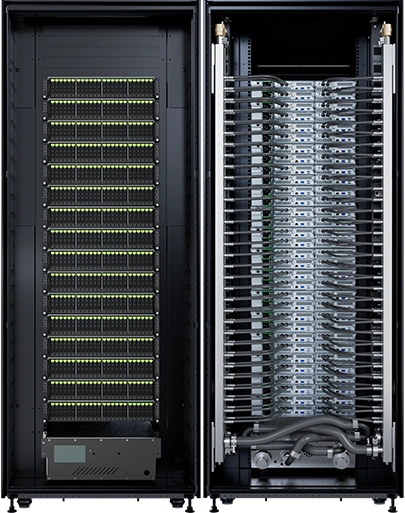 |
16 x H263-S62-LAW1/LAN1without redundant | 5th/4th Gen Intel® Xeon® | Motivair(25ST7-4000ZG-M4R) | Motivair(25ST7-4000Z2-M4R)CGB20 | nVent(25CRH-03K001-C0R)QPA2without redundant | nVent(25EC5-DS8300-H0S)rear manifold | PG25 |
| 16 x H263-S63-LAW1/LAN1without redundant | 5th/4th Gen Intel® Xeon® | |||||||
| 16 x H273-Z80-LAW1/LAN1without redundant | AMD EPYC™ 9005/9004 | |||||||
| 16 x H273-Z81-LAW1/LAN1without redundant | AMD EPYC™ 9005/9004 | |||||||
| 16 x H274-S60-LAW1without redundant | Intel® Xeon® 6 | |||||||
| 16 x H274-S61-LAW1without redundant | Intel® Xeon® 6 | |||||||
| DL83-HD0 | 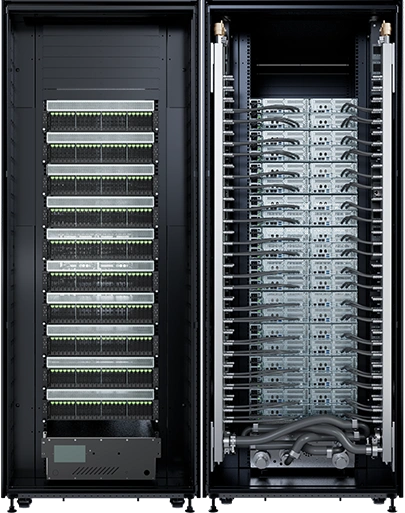 |
10 x H374-A80-LAW1without redundant | Intel® Xeon® 6 | Motivair(25ST7-4000ZG-M4R) | Motivair(25ST7-4000Z2-M4R)CGB20 | nVent(25CRH-03K001-C0R)QPA2without redundant | nVent(25EC5-DS8300-H0S)rear manifold | PG25 |
| 10 x H374-A81-LAW1without redundant | Intel® Xeon® 6 | |||||||
| DL83-HD1 | 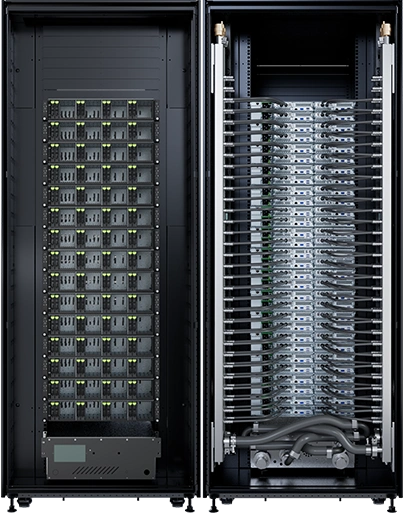 |
15 x H273-Z85-LAZ1without redundant | AMD EPYC™ 9005/9004 | Motivair(25ST7-4000ZG-M4R) | Motivair(25ST7-4000Z2-M4R)CGB20 | Anderson(125A Smart PDU)QPA2without redundant | nVent(25EC5-DS8300-H0S)rear manifold | PG25 |
| 15 x H274-A81-LAZ1without redundant | Intel® Xeon® 6 |
Applications
-
AI and HPC
Ensuring exceptional performance when handling demanding compute and GPU workloads is crucial for Artificial Intelligence (AI) and High-Performance Computing (HPC) heavy, complex workloads. GIGABYTE servers not only deliver outstanding performance but also effectively address the heat dissipation requirements that accompany the most powerful GPUs available today. Coupled with GIGABYTE DLC technology, systems achieve peak performance in a dense configuration.
-
Cloud Computing
Cloud computing services are known for their higher capacity, incredible processing performance and resource allocation, and density driven data centers, demanding more powerful cooling methods within a limited space. GIGABYTE DLC technology optimizes space and decreases component failure rates. This achieves sustainable and performance objectives.
-
Scientific Computing and Data Analytics
Cloud computing services are known for their higher capacity, incredible processing performance and resource allocation, and density driven data centers, demanding more powerful cooling methods within a limited space. GIGABYTE DLC technology optimizes space and decreases component failure rates. This achieves sustainable and performance objectives.
Another Step Toward Green Computing with GIGABYTE DLC Solution
Related Products
Resources


































